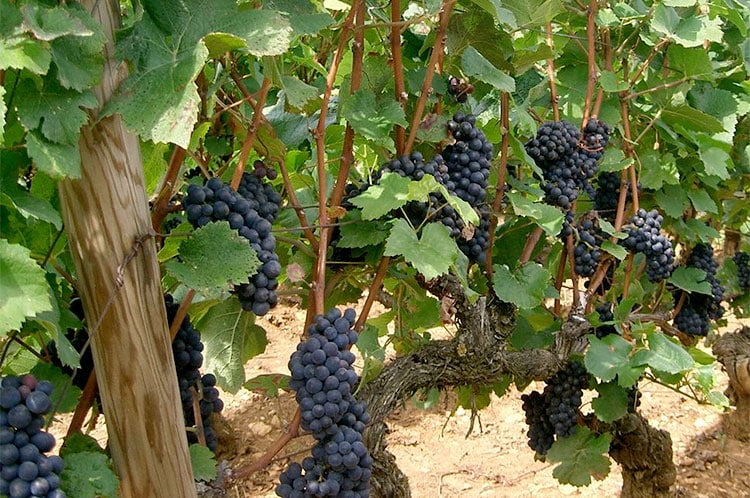• by Jenny Benzie, Advanced Sommelier & Proprietress of Épernay Wine & Spirits •
Hot temperatures are fading as the end of summer approaches on the heels of Labor Day, but our taste buds are alive and ready for the Indian Summer bounty that awaits us here on Nantucket. The island isn’t quite as crowded; you can sit on the beach without hearing the conversation of the people next to you and you can walk into a restaurant for dinner without a reservation. But what do you do when you cozy up to the bar, order a glass of Pinot and the bartender asks, “Grigio, Gris, Blanc, or Noir?” What?
There is more than one Pinot in the wine world, and it doesn’t help that there are aliases for the ones that you do know. Keeping the following tips in mind will help you to easily decipher between the different Pinots and confidently order exactly what you are looking for.
Everyone has some sort of image that comes to mind about Pinot Grigio, but think outside that box of wine (pun intended). Pinot Grigio and Pinot Gris are actually the same grape. Their names reference the gray, slightly red color of the grape skin when the grapes are harvested. The resulting wine is white, although it may sometimes have the slightly bronzed color of onion skin if the grape skin is left in contact with the juice for a longer period of time during processing. Think of it as a ‘Grey Lady’ kind of wine where these words mean ‘gray’ in their respective languages. Grigio is the Italian name, while Gris is French. Same thing, different language, right? Even with this in common, however, the wines can be a little stylistically different.
Pinot Grigio comes mostly from the cool northern parts of Italy. It makes a lean, crisp, light-bodied wine with aromas and flavors of bright citrus and minerals and moderate acidity. It is typically a simple, straightforward, easy sipping wine with no need for serious contemplation. This makes it perfect for uncomplicated, light summer meals. It works well with seafood (think halibut with Massachusetts peach salsa) and simple chicken dishes from your backyard grill.
Pinot Gris, especially from France’s Alsace region, is richer, more lush, and sometimes lightly sweet, with flavors of melons and tropical fruit. It is more full-bodied and makes a great accompaniment to pasta with creamy sauces and heartier fish (local stripped bass) and your Mom’s famous chicken casserole.
Producers in Oregon (Cristom), New Zealand (Mount Beautiful) and beyond usually signal which style they’re going for depending on what name they choose.
Next up is Pinot Blanc. Think of this like writing a ‘Blanc’ check where anything goes, like Nantucket in the summer! Blanc refers to the white color of the grape skin and the end product wine. This grape, along with Pinot Gris, is a color mutation of Pinot Noir. What began as a genetic mutation has since been cultivated into its own type of wine. Today, it is the most rare of the Pinot family. It has aromas of fresh stone fruit and a hint of mineral complexity. Its lengthy mouthfeel and bright finish make it an amazing alternative to Pinot Gris.
When used in blending, Pinot Blanc adds body and complexity to the final wine. It can also be used in sparkling wine production (Cremant d’Alsace) due to its lower alcohol and higher acidity. Not only found in Europe, there are great domestic examples from Oregon (Adelsheim) and California (Robert Foley) as well. It is a very versatile wine and worth your effort to discover if you haven’t already. Check it out as a great way to start a meal paired with zesty crab salad, blue fish paté or carrot hummus with fresh veggies.
Now enter Pinot Noir, the red grape that makes famous wine all over the world. This grape also has a few aliases, Pinot Nero and Blauburgunder, to name a few. Pinot Noir grows best in cool climates, but is a bit temperamental and needs enough time on the vine to fully ripen. Because of this, really excellent wines from this grape tend to be more expensive. This is a thin-skinned grape, which translates to lower tannins and less intensity of color. That makes it more transparent in your glass compared to other thick-skinned grapes, like Syrah.
We have different styles of this wine, but the name here typically stays the same across well-known regions. Region of origin affects Pinot Noir more than any other grape. Selections from the New World tend to be more fruit forward, ranging from bright red cherry and tart cranberry on the Sonoma Coast (Radio-Coteau, check out their ‘La Neblina’) to black cherry and a touch of higher alcohol from the Russian River Valley (Merry Edwards, Paul Hobbs). Red Burgundy from France is always Pinot Noir, showing lots of terroir (the “sense of place” where it is grown) and earthiness, such as dust and mushrooms. However, Pinot Noir that hails from Oregon is a balance of the fruit driven and earthy styles of wine that originate elsewhere. Pinot Noir can usually be found in places where Chardonnay, Pinot Gris, and Pinot Blanc are also grown (think Oregon, Argentina, Italy and New Zealand). Don’t let the light color of the wine fool you. No matter where it comes from, Pinot Noir is full of complex layers, moderate acidity and super flexible when it comes to food pairing. It is the perfect catch with your fresh tuna steak.
If you keep this helpful information in mind, the next time someone offers you a glass of Pinot, you won’t be surprised by the color. You will be able to figure out which style and which grape it is just by smelling and tasting it and not even looking at the color. Your taste buds will be happy and you’ll be able to correctly pair it with your meal no matter which one you’re drinking.

